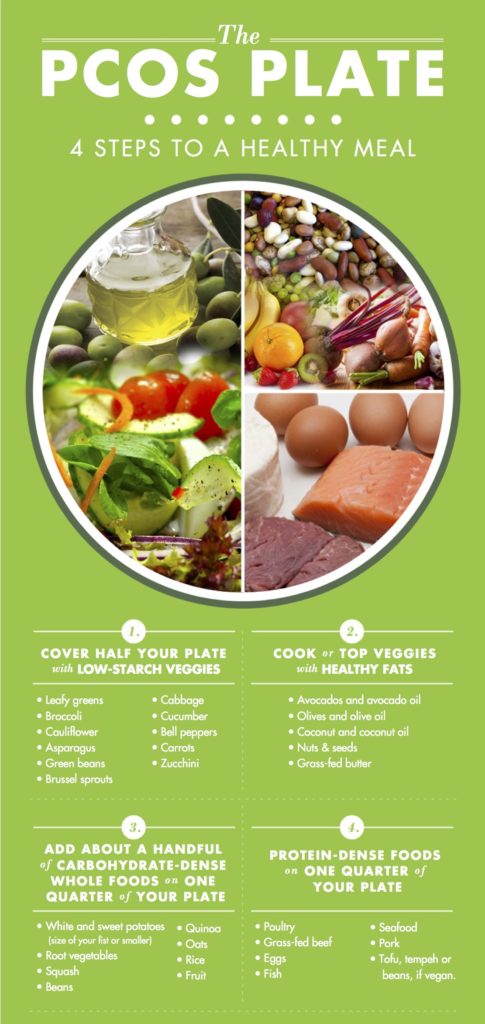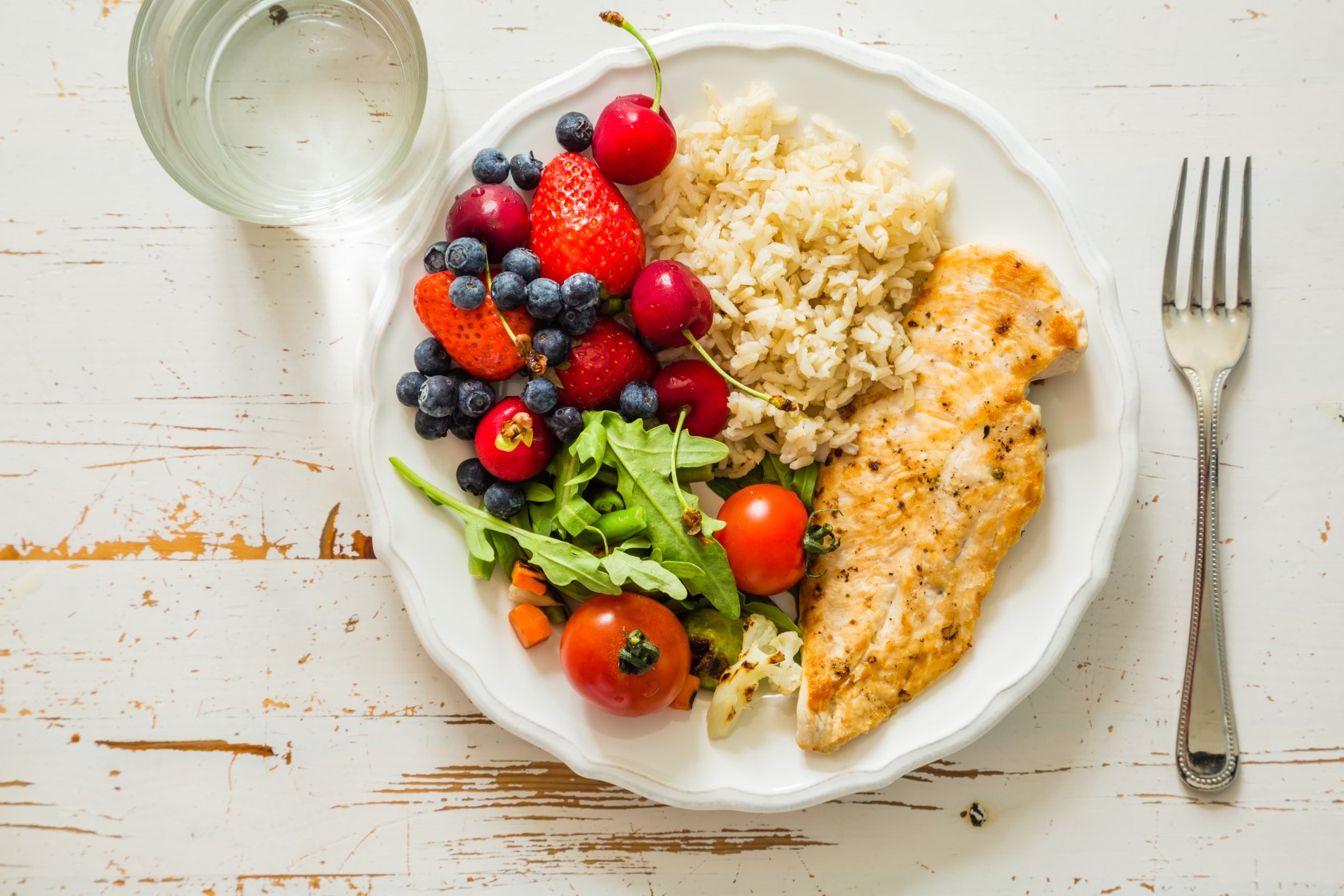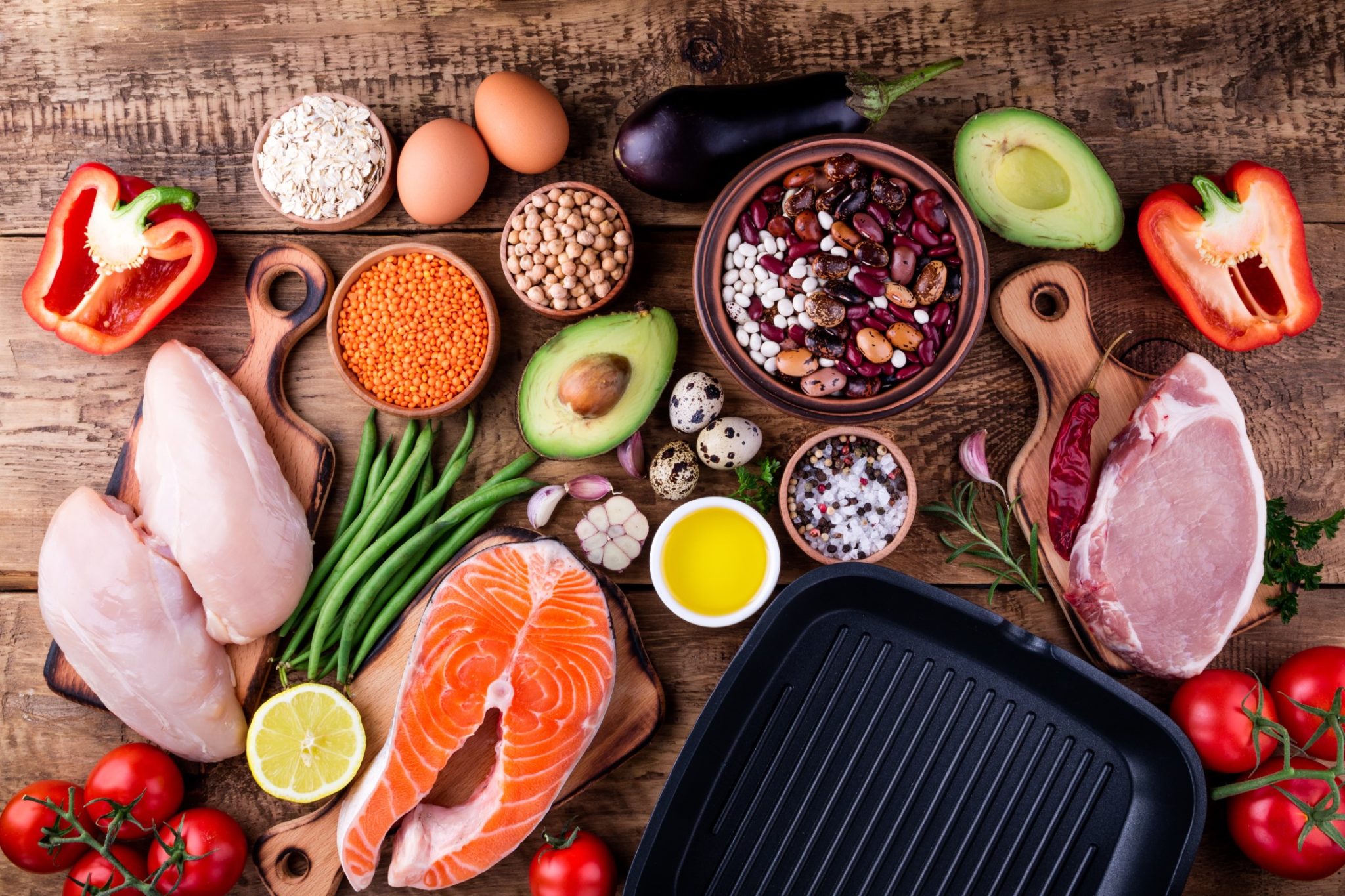Losing weight with PCOS comes down to a straightforward question: What foods in what amounts should I eat to improve symptoms?
I covered the first part of that question in a previous post, where I talked about what foods you should be eating for health and weight loss. In this post, I’ll be discussing portion control and its role in losing weight with PCOS and managing other symptoms.
Portion Control Matters
There are many different types of diets that work well for losing weight with PCOS. However, I’ve noticed that many of them tend to focus more on what foods to eat and pay very little attention to portion control. In my opinion, this is a big issue! No matter how healthy the food, consuming more food than you need will cause you to gain fat. On the other hand, eating less than you need will force your body to get some of its daily energy from the fat stored in your body, thus causing you to lose weight.
To lose weight with PCOS, aim to eat healthy foods that make you feel good while maintaining a modest caloric deficit.
Yes, it’s true that if you ate less food than you need, but only ate fast food, you could lose weight. However, you wouldn’t be able to stick with that plan for very long because you’d begin to feel lousy. You would experience low energy, poor digestion, and inflammatory responses, and chances are you would start to eat more than you need. It’s just human nature to eat more when you feel tired and rundown.
On the other end of the spectrum, you could load up on healthy foods, pay no attention to portion control, and feel fantastic. But you would probably quit your new diet because you’ll become frustrated when you do not lose any weight.
The point is this: to succeed at PCOS weight loss you need both portion control and a diet full of mostly healthy choices.
How to Master Portion Control
There are two steps to mastering portion control. The first step is to portion out your food according to external measurements, like counting calories. The second step is to improve your hunger awareness so that you can stop eating once your body has what it needs.
Step 1: Portion Your Plate
Start by portioning out your meals so that you have lean protein, healthy carbohydrates, and healthy fats in the appropriate amount for your size.
My favorite way to measure out portions is to use your hand as a measuring device:
- Your palm determines your protein portions.
- Your fist determines your veggie portions.
- Your cupped hand determines your carb portions.
- Your thumb determines your fat portions.
So for each meal you put on your plate, there should be:
- 1 palm of lean protein
- 1 fist of vegetables
- 1 entire thumb of fat dense foods
- 1 cupped hand of healthy carb dense foods
Note: If you are trying to lose weight, limit your carbs to no more than 3-4 servings each day. You can have small snacks that skip the carb portion or use 1/2 a serving.
Hey Erika, would counting calories be even better?

If you love using a food tracker, go for it – but don’t expect it to be much better than this simple system. I know, measuring by your hand sounds very unscientific when compared with calorie counting. But here’s the deal.
Calorie counting is annoying, time-consuming, and shocking inaccurate. The average margin of error when you count calories is about 25%! You can read more about this fascinating topic at one of my favorite nutrition blogs.
Measuring with your hand is fast, easy, and you can do it anywhere. And since your hand is proportionate to your size, you will get the right amount of food for you. If you want a quick reminder on proper portion control for PCOS, take a look at my handy PCOS Plate Infographic.
If you are looking for a way to start changing your nutrition now, sign up here to get my PCOS Plate sent to your inbox. The PCOS Plate is my simple guide to eating a nutritious PCOS diet, one meal at a time. It includes this infographic, as well as delicious recipes in healthy portions.
Step 2: Develop Hunger Awareness
Women living with PCOS have trouble with hunger awareness for many reasons: disordered eating is more common in PCOS, hormonal imbalances can interfere with your natural “off switch,” and cravings related to insulin resistance can cause you to overeat. Fortunately, there are some simple steps you can take to get control of hunger and stop overeating.
- Never eat while distracted by a computer, television, phone, or while driving. After years of coaching, I can tell you that the most common reason for overeating is that most women are so distracted during mealtime that they don’t even realize they are overeating. Read my client Sheri’s story to learn how distracted eating causes weight gain.
- Eat slowly. It takes about 20 minutes for your stomach to send a message to your brain that you are full. Eating slowly helps your brain receive that message before you have had more food than you need. Try to spend at least 15-20 minutes eating each meal.
- Eat off a plate or a bowl, not out of a bag or a box. No matter what you are eating, make sure you can see it. Eating food you can’t see will make it difficult for your brain to process how much you are eating.
- If you are trying to lose weight, stop eating before you feel full, even if you have measured out your portions properly. Leaving the table once you feel 80% full will help you shed fat. So if you feel close to full and there is still food on your plate, leave it for leftovers.
Losing weight with PCOS does not have to be complicated. You can use simple methods of portion control to help you eat the right food in the right amounts. If you consistently make mostly healthy choices, put proper portions on your plate, and become more aware of your hunger and fullness cues, you will succeed!






